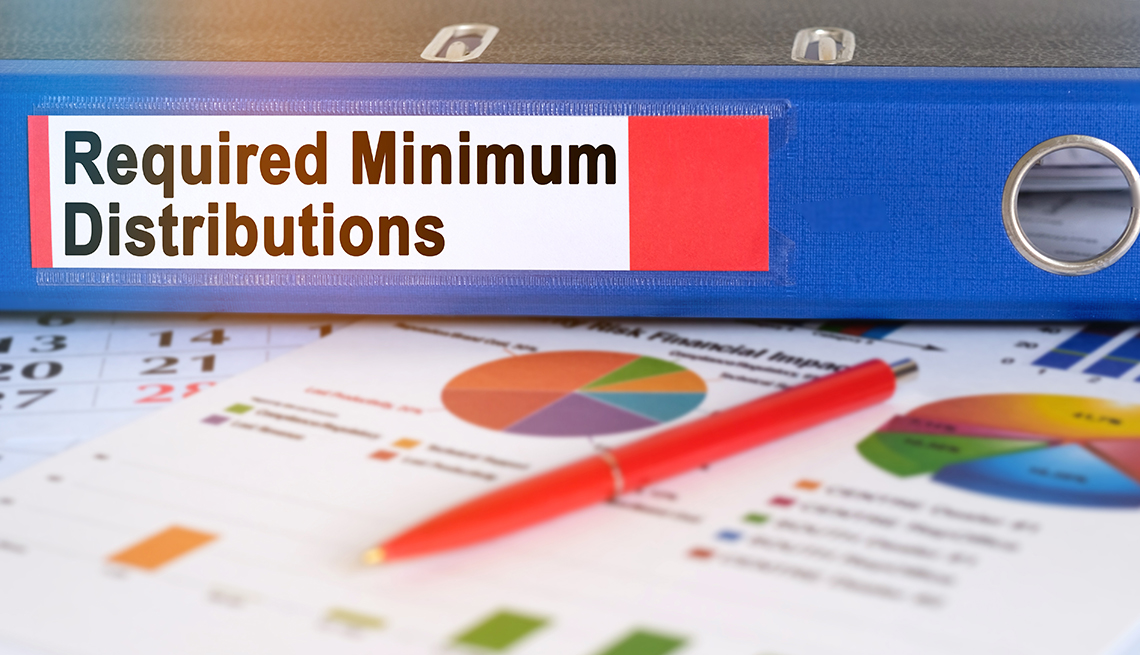How an IRS Rule Update Impacts Required Minimum Distributions
Best strategies for retirement account holders taking RMDs
Americans are living longer than they were a generation ago, and the government knows it. Starting in 2022, that will be reflected in the amount of money you have to draw from retirement accounts at different ages.
The new numbers come from updated IRS formulas determining what are known as required minimum distributions. Those RMDs are the amounts — calculated as a percentage of account size that you have to pull out annually from your 401(k), 403(b) or individual retirement account (IRA) starting in your early 70s. The result is that your RMDs — taxed as regular income if withdrawn from traditional accounts — will be smaller in any given year than they would have been under the old formulas. On top of two other RMD changes in recent years, the new numbers muddy up an already complex subject. Here’s what you have to know about RMDs, along with some good strategies for making the most of retirement account rules.
Wind up 2021
“This is an especially confusing year for getting your RMDs right,” warns IRA expert Ed Slott. In the first place, RMDs are back after having been suspended for calendar year 2020. And the IRS penalties for not withdrawing your annual minimum are heavy, so don’t forget. Note: You don’t have to take RMDs from Roth IRAs, but you do have to withdraw from a Roth 401(k). And there’s a birthday issue for some account holders: The 2019 SECURE Act raised the age at which RMDs kick in from 70½ to 72 — but not for people who were already taking RMDs in 2019. So if you turned 72 before July 1, 2021, you must take an RMD before Dec. 31 — your regularly scheduled 2021 withdrawal. If your 72nd birthday falls in the second half of 2021, you have until April 1, 2022, to make your first withdrawal, though you’ll still use 2021 tables to calculate that amount.
AARP Membership -Join AARP for just $12 for your first year when you enroll in automatic renewal
Join today and save 25% off the standard annual rate. Get instant access to discounts, programs, services, and the information you need to benefit every area of your life.
Pull back in 2022
Starting next year, many people will have RMDs roughly 6 to 7 percent smaller than they would have been under the IRS’s old life expectancy tables. For example, a single 75-year-old woman whose IRA is worth $100,000 at the end of 2021 will have to withdraw a minimum of $4,065 in 2022, about $300 less than she would have under the earlier guidelines. To estimate your own RMD for 2021 or 2022, use AARP's RMD calculator.
However, just because you can withdraw less money every year doesn’t mean you should. You may need more than your RMD to pay living expenses in retirement. In fact, if you retire before age 70 — well before you have to take RMDs at all — you might want to withdraw money for living expenses so you can defer taking Social Security and grow the size of your monthly benefits. That’s generally a wise move, points out Boston University economics professor Laurence J. Kotlikoff.
Save on taxes
While the money you withdraw from traditional IRAs, 401(k)s and 403(b)s is treated as taxable regular income, you have some strategies, under current law, to blunt the impact. If you are older than 70½, you can donate directly from your traditional IRA (but not those other accounts) to what’s known as a 501(c)(3) nonprofit — a food bank or religious institution, for example. The donation, known as a qualified charitable distribution (QCD), can be counted toward any RMD you might owe, but the withdrawal will be exempt from income taxes — even if, like most Americans, you now take the standard deduction and do not itemize your charitable gifts. “IRA money is always the best money to give to charity,” Slott says.
Unless Congress changes current rules, you could also convert tax-deferred IRA money into a Roth IRA. You’ll owe taxes on the money you take out of your IRA and move to the Roth, but the money can then grow tax-free. You won’t owe any additional taxes when you withdraw the money from the Roth, and you won’t have to make any RMDs. You cannot use your RMD for a Roth conversion, but you can convert additional money to a Roth after satisfying your distribution requirement in any year. Left to grow over your new and improved life expectancy, that Roth should pay you some tax-free rewards in the out-years.
Linda Stern, former Wall Street editor for Reuters, has been covering personal finance since the 1980s.


